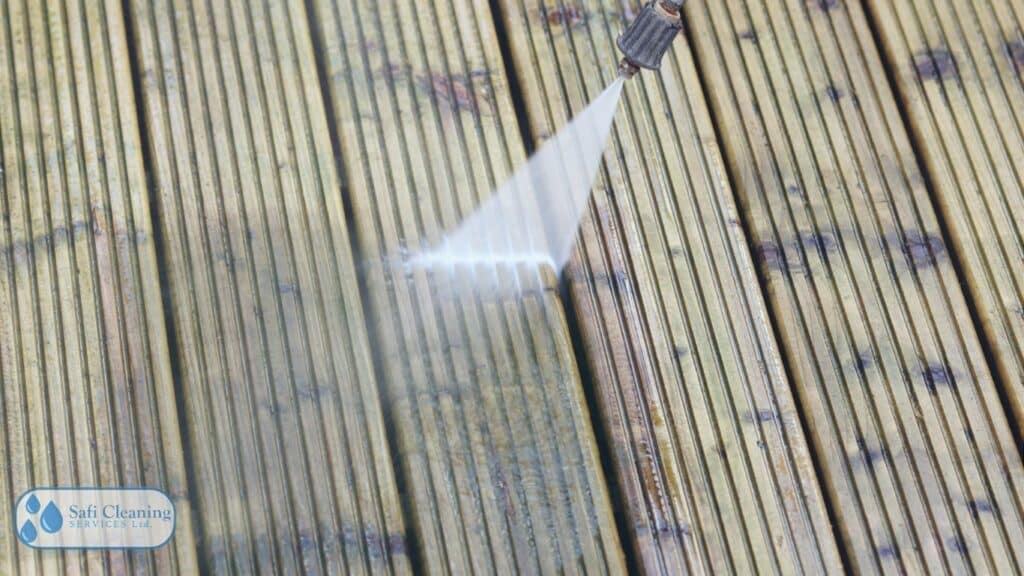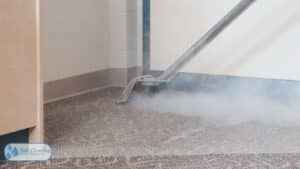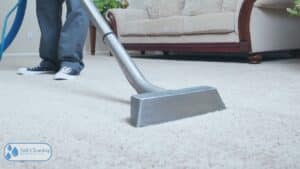Pressure washing patios is an essential task for homeowners who want to keep their outdoor spaces clean and well-maintained. Patios are often exposed to the elements and can accumulate dirt, grime, and stains over time. Pressure washing is an effective way to remove these unsightly marks and restore the appearance of the patio. In addition to improving the aesthetics, pressure cleaning can also help prolong the lifespan of the patio by removing harmful substances that can cause damage.
What is pressure washing?
Pressure washing, also known as power washing, is a cleaning method that uses high-pressure water to remove dirt, grime, and other contaminants from surfaces. The process involves using a pressure washer, which is a machine that generates a powerful stream of water at high pressure. The water is sprayed onto the surface being cleaned, effectively blasting away any dirt or stains.
To perform pressure washing, you will need a pressure washer machine, which consists of a motor or engine that powers a pump to create high-pressure water. The machine also has a hose and nozzle attachment that allows you to control the direction and intensity of the water stream. Some pressure washers may also have additional features such as adjustable pressure settings or detergent injection systems.
Why pressure clean a patio?
There are several benefits to pressure cleaning a patio. Firstly, it helps remove dirt, grime, and stains that can accumulate over time. This can greatly improve the appearance of the patio and make it more inviting for outdoor activities. Pressure cleaning can also help remove mould, mildew, and algae, which can be unsightly and pose health risks.
In addition to improving aesthetics, pressure cleaning can also help prolong the lifespan of a patio. Over time, dirt and debris can build up on the surface of the patio and cause damage. By regularly pressure cleaning the patio, you can remove these harmful substances and prevent them from causing long-term damage.
Can pressure washing damage a patio?
One common concern about pressure washing is whether it can damage the surface of a patio. While pressure washing can be a powerful cleaning method, it is generally safe for most types of patios when done correctly. However, there are some precautions that should be taken to avoid causing damage.
One important factor to consider is the pressure setting on the pressure washer. Using too high of a pressure can cause damage to certain types of patios, such as delicate stone or wood surfaces. It is important to adjust the pressure setting based on the type of patio being cleaned. Additionally, using the wrong nozzle attachment or holding the nozzle too close to the surface can also cause damage. It is important to follow the manufacturer’s instructions and use the appropriate equipment for the job.
Types of patios that can be pressure cleaned
Pressure cleaning can be used on a variety of patio surfaces, including concrete, brick, and stone. Concrete patios are one of the most common types and can benefit greatly from pressure cleaning. The high-pressure water can effectively remove dirt, stains, and even oil or grease marks from the surface.
Brick patios can also be pressure cleaned, but it is important to use a lower pressure setting to avoid damaging the mortar between the bricks. Stone patios, such as those made from natural stone or pavers, can also be pressure cleaned. However, it is important to use caution and adjust the pressure setting based on the type of stone being cleaned.
Factors that can affect the outcome of pressure cleaning a patio
Several factors can affect the outcome of pressure cleaning a patio. One important factor is the age and condition of the patio. Older or more worn-out patios may require more care and a lower pressure setting to avoid causing damage. It is important to assess the condition of the patio before starting the pressure cleaning process.
Another factor to consider is the type of stains or contaminants on the patio. Different types of stains may require different cleaning methods or detergents. For example, oil or grease stains may require a degreaser to effectively remove them. It is important to identify the type of stain and choose the appropriate cleaning method.
Precautions to take before pressure cleaning a patio
Before starting the pressure cleaning process, it is important to take some safety precautions. Firstly, it is important to wear protective gear such as safety goggles and gloves to protect yourself from any debris or chemicals that may be present during the cleaning process. It is also important to check for any electrical hazards, such as exposed wires or outlets, and ensure that they are properly covered or turned off.
Additionally, it is important to prepare the patio for pressure cleaning. This may involve removing any furniture or objects from the area, as well as sweeping away any loose debris. It is also a good idea to wet down any nearby plants or vegetation to protect them from the high-pressure water.

How to pressure clean a patio safely
To pressure clean a patio safely and effectively, follow these step-by-step instructions:
1. Prepare the pressure washer by filling it with water and adding any necessary detergent according to the manufacturer’s instructions.
2. Connect the hose and nozzle attachment to the pressure washer.
3. Adjust the pressure setting on the pressure washer based on the type of patio being cleaned.
4. Start by spraying a small test area to ensure that the pressure setting is appropriate and does not cause damage.
5. Begin pressure cleaning by starting at one end of the patio and working your way towards the other end in a systematic pattern.
6. Hold the nozzle at a distance of about 1-2 feet from the surface being cleaned and move it in a sweeping motion.
7. Pay extra attention to areas with stubborn stains or dirt buildup, and adjust the pressure or use a detergent if necessary.
8. Once the entire patio has been cleaned, rinse it thoroughly with clean water to remove any remaining detergent or debris.
9. Allow the patio to dry completely before replacing any furniture or objects.
Throughout the pressure cleaning process, it is important to maintain safety by wearing protective gear and being aware of your surroundings. Avoid pointing the nozzle at yourself or others, and be cautious of any electrical hazards or slippery surfaces.
Alternative ways to clean a patio
While pressure washing is an effective method for cleaning patios, there are alternative methods that can also be used. One option is to use a pressure washer attachment, such as a surface cleaner or brush attachment. These attachments can help distribute the water more evenly and provide a gentler cleaning method for delicate surfaces.
Another alternative is to use a chemical cleaner specifically designed for patio cleaning. These cleaners can be applied to the surface of the patio and then scrubbed or rinsed off. Chemical cleaners can be effective for removing tough stains or grime, but it is important to follow the manufacturer’s instructions and use caution when handling these products.
In conclusion, pressure washing patios is an important task for homeowners who want to keep their outdoor spaces clean and well-maintained. Pressure cleaning can remove dirt, grime, and stains, improving the appearance of the patio and prolonging its lifespan. While pressure washing can be a powerful cleaning method, it is generally safe for most types of patios when done correctly. By following the appropriate precautions and adjusting the pressure setting based on the type of patio being cleaned, homeowners can safely and effectively pressure clean their patios.
If you’re concerned about the potential damage that pressure washing can cause to your patio, you may also be interested in reading Safi Cleaning Services’ blog post on “how often should a Patio be Cleaned?“
FAQs
What is pressure washing?
Pressure washing is a cleaning method that uses high-pressure water spray to remove dirt, grime, and other types of debris from surfaces.
Can pressure washing damage a patio?
Yes, pressure washing can damage a patio if not done correctly. The high-pressure water can strip away the surface layer of the patio, leaving it vulnerable to further damage.
What types of patios are at risk of damage from pressure washing?
Patios made of delicate materials such as brick, concrete, and natural stone are at risk of damage from pressure washing. Additionally, older patios that have already suffered from wear and tear are more susceptible to damage.
What are the signs of patio damage from pressure washing?
Signs of patio damage from pressure washing include cracks, chips, and pitting on the surface of the patio. Additionally, the patio may become discoloured or faded.
How can I prevent damage to my patio when pressure washing?
To prevent damage to your patio when pressure washing, use a lower pressure setting and a wider spray nozzle. Additionally, avoid holding the spray nozzle too close to the surface of the patio and use a cleaning solution specifically designed for your patio material.
Can I pressure wash my patio myself?
Yes, you can pressure wash your patio yourself, but it is important to take the necessary precautions to prevent damage. If you are unsure about how to pressure wash your patio safely, it is recommended to hire a professional.




